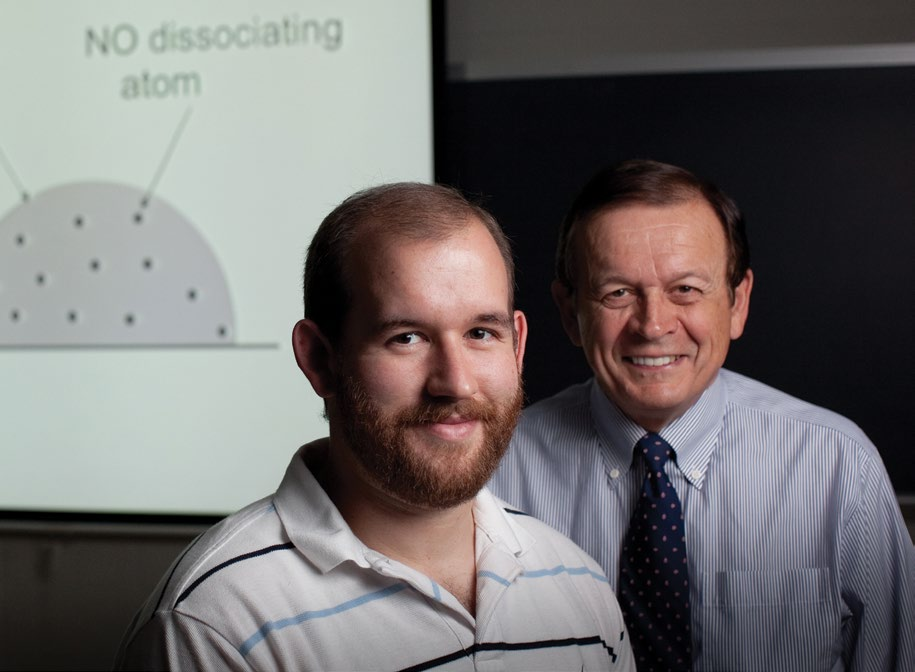A group led by Charles Lyman, professor of materials science and engineering, has designed and tested low-cost, bimetallic, nanoparticle-based catalysts that can convert harmful NOx gases, which are emitted from coal- and gas-fired power plants, to nitrogen and water vapor.
The use of catalysts for pollution control in power plants is not new. A technique called selective catalytic reduction (SCR) can convert 95 percent of NOx to nitrogen and water — but with a catch.
“Conventional SCR requires another toxic gas, ammonia, to carry out the reduction,” says Rick Herman, a senior research scientist. “In addition, these catalysts only perform well at high temperatures.”
Lyman and Herman sought first to improve the performance of a platinum-rhodium nanoparticlebased catalyst that uses hydrogen, rather than ammonia, as a reducing agent. This catalyst works at much lower temperatures.
“Choosing the correct catalyst preparation procedure was critical to ensuring that all these criteria were met,” says Paul Dimick, a Ph.D. candidate in chemical engineering working with Lyman.
To obtain the desired microstructure, researchers sequentially impregnated an alumina support with aqueous solutions of platinum and rhodium chlorides. Then they applied a series of thermal treatments to convert the metal chlorides into active bimetallic nanoparticles.
By replacing rhodium with much cheaper cobalt, the group developed an inexpensive catalyst capable of reducing NOx with hydrogen instead of ammonia.
“This procedure was chosen so that the desired microstructure would be achieved under reaction conditions,” says Dimick.
When the researchers examined the prepared catalysts with Lehigh’s high-resolution aberrationcorrected scanning transmission electron microscope, they found nanoparticles with an average diameter of 2 nm that were well-dispersed on the alumina support.
In situ Fourier transform infrared (FTIR) spectroscopy revealed that the N-O chemical bond in a catalyst containing 5-percent rhodium was broken as soon as the molecule made contact with the nanoparticle. In a catalyst of 10-percent rhodium, however, the NO molecules tended to adhere to clusters of rhodium atoms present on the surface, which could potentially inhibit the desired reaction. Catalyst performance data also showed that the catalyst containing only 5-percent rhodium exhibited a much higher activity.
Rhodium, however, is rare and expensive. It now trades at around $2,400 per troy ounce after exceeding $10,000 in 2008. To reduce NOx emissions more cheaply, the researchers turned to cobalt, which is 900 times less expensive than rhodium.
“Cobalt is also capable of breaking the N-O bond,” says Lyman. “It forms a solid solution with platinum at low concentrations and finds its way to the surface of a nanoparticle under reaction conditions.”
The preparation of cobalt-platinum catalysts is almost identical to that of rhodium-platinum. The researchers merely substituted metal nitrates for chlorides.
While all catalysts containing less than 5-percent cobalt were found to be capable of reducing NOx to nitrogen and water vapor, the 2-percent cobalt catalyst performed best. “In situ FTIR spectroscopy revealed that the 2-percent catalyst was the only one capable of immediately breaking the N-O bond,” says Dimick.
The same methodology has now been applied to a nickel-platinum catalyst system with equally promising results.

